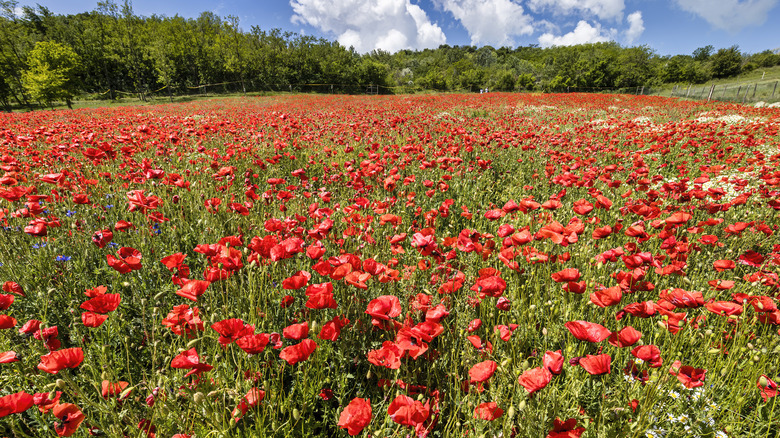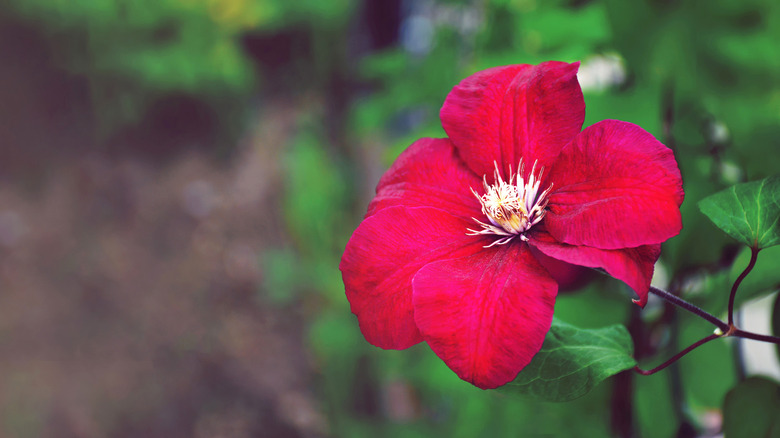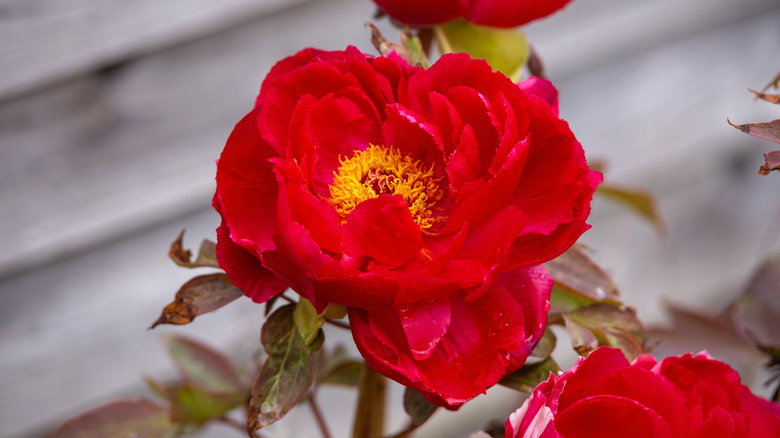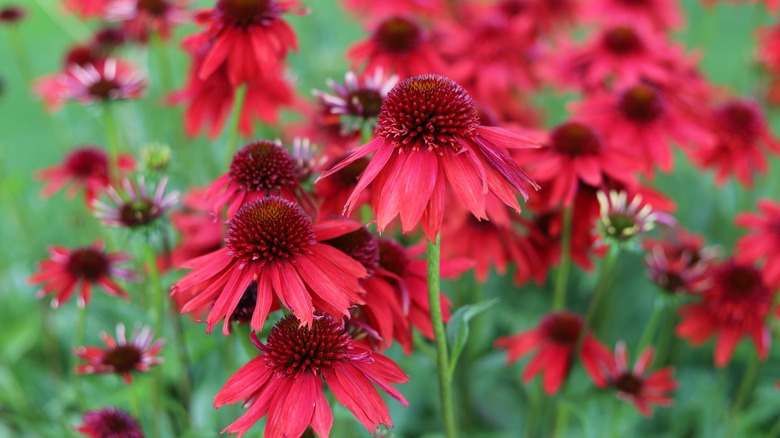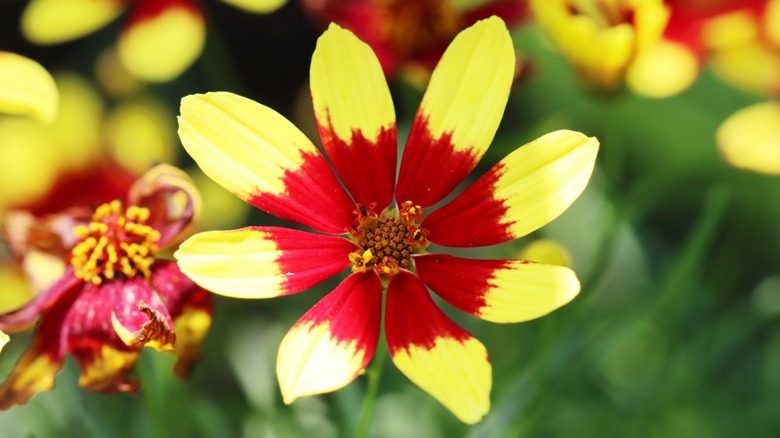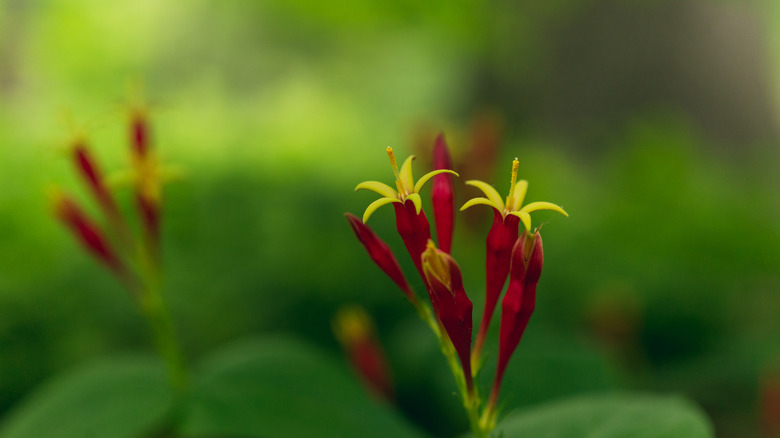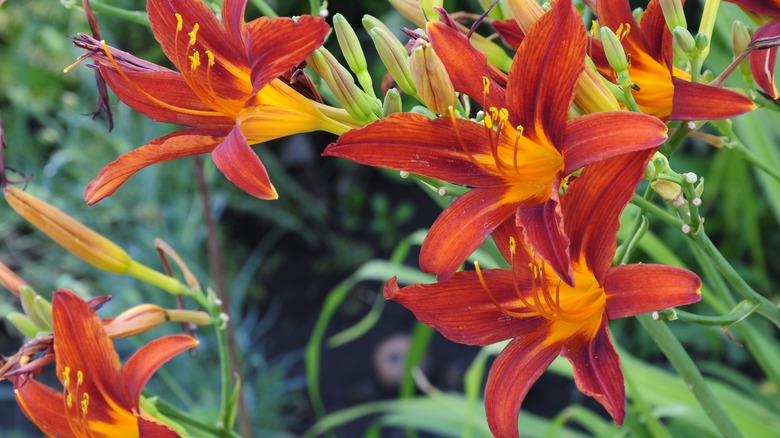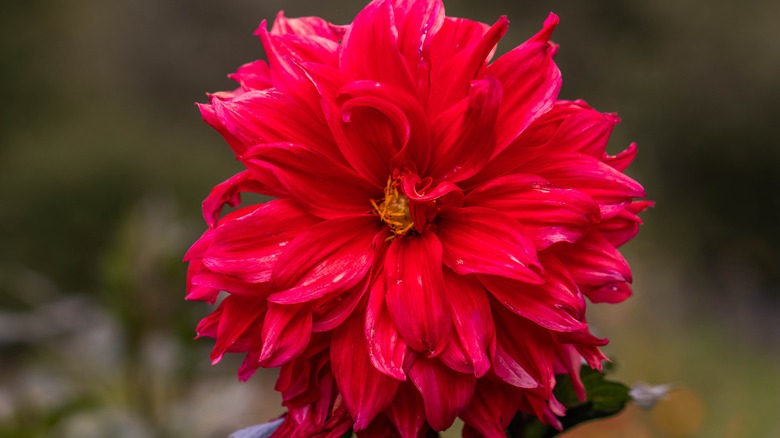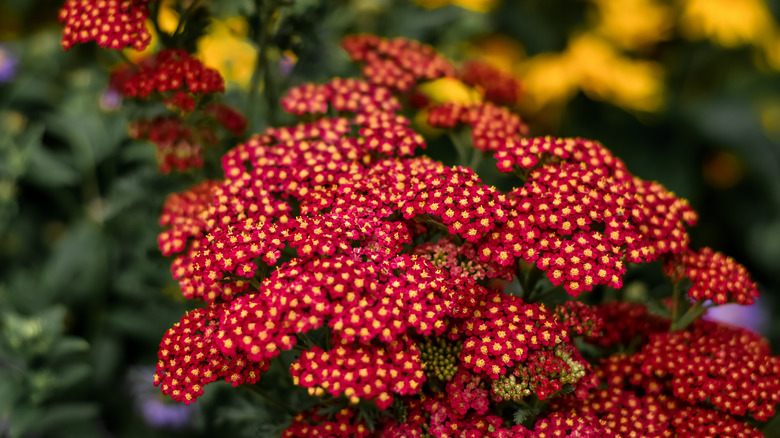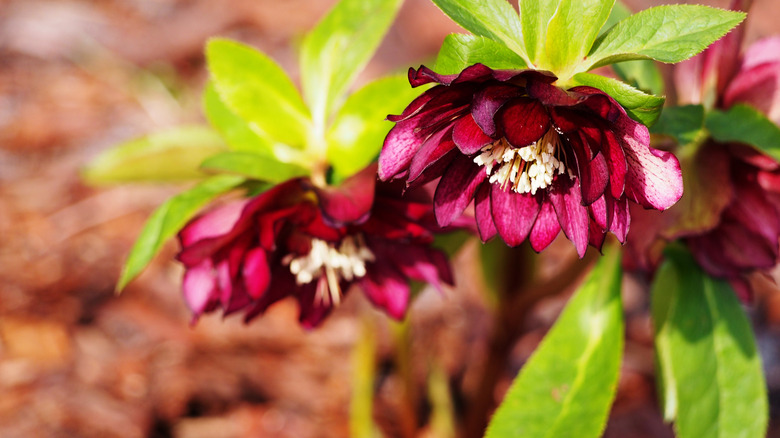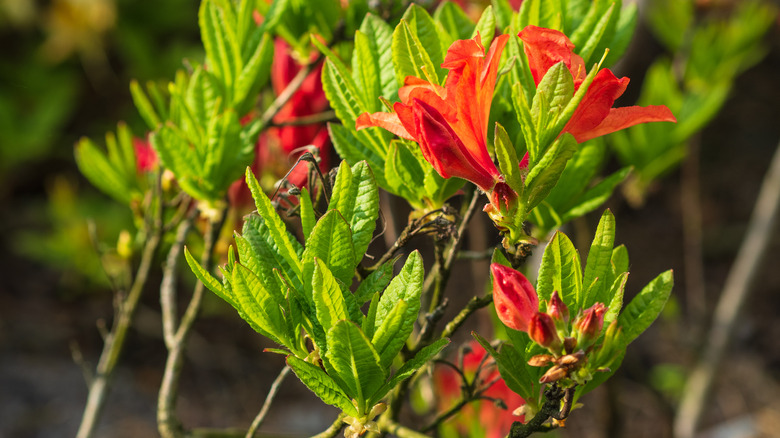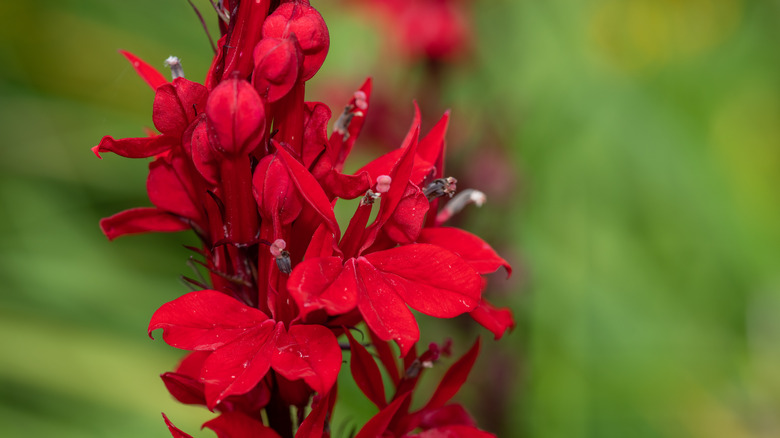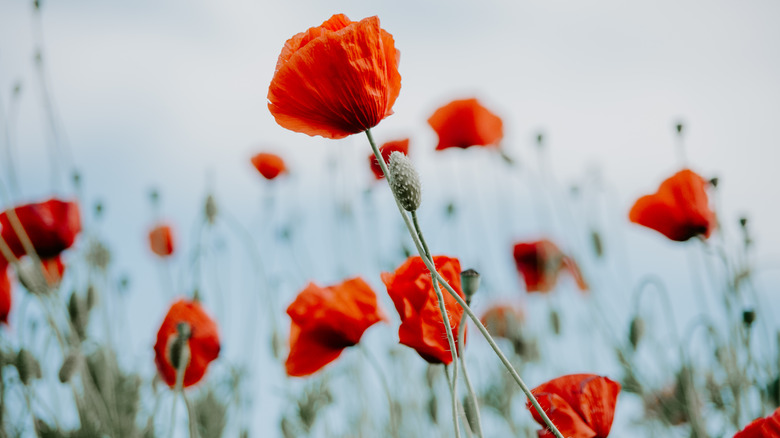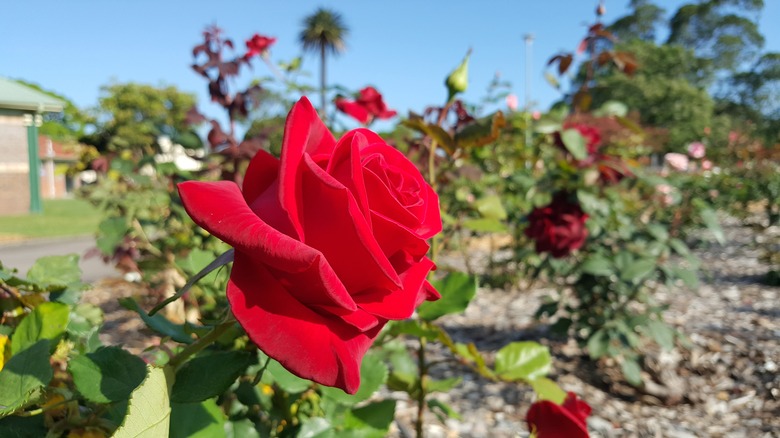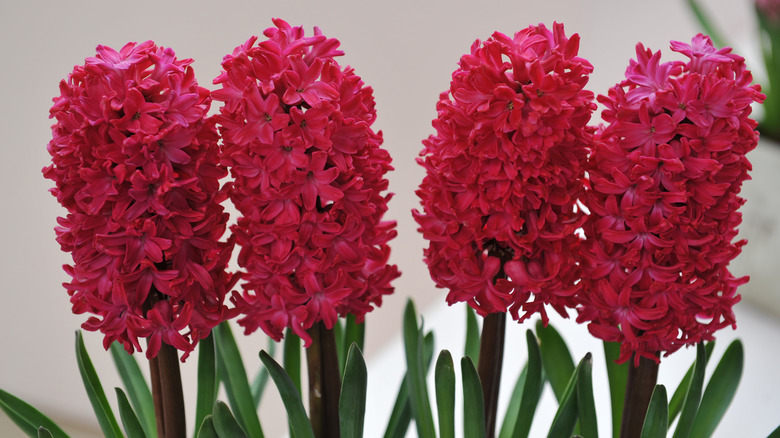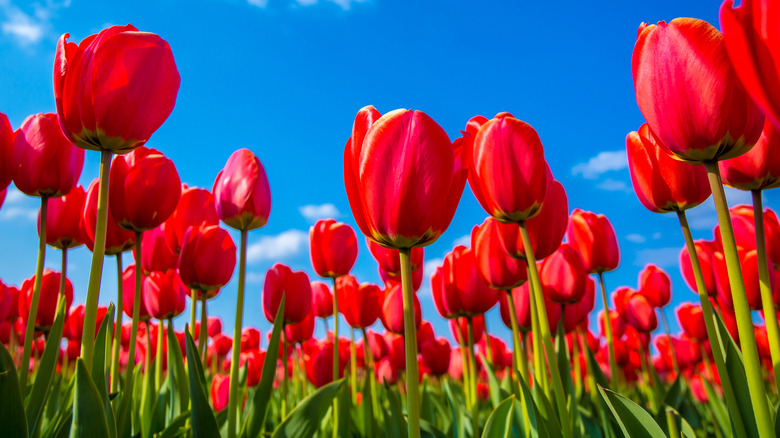15 Perennials That Bloom With Stunning Red Flowers
Red is known as the color of love, romance, and passion. In some Asian countries, it is also known as a lucky color that promises future success. For this reason, it is commonly used in Japanese and Chinese weddings and other ceremonies, as told by American Meadows. Incorporating red into your garden can remind you of these feelings of love, luck, and fiery passion as you watch your perennials bloom each year. Or, for a bolder look, allow red roses, peonies, coneflowers, and daylilies to consume your home garden during warmer months.
The red flower-filled garden is a classic look that is unlikely to grow old. From chic red roses to more unique options like hyacinths and dahlias, there are so many possibilities out there to create a gorgeous display of red flowers that bloom year after year. Most perennials listed in this collection are low-maintenance, and they easily grow into enthusiastically flowering specimens that can be planted among other bloomers with similar growing requirements.
1. Red clematis
Red clematis (Clematis 'Rouge Cardinal') is a vining plant in the Ranunculaceae family, which is also known as the buttercup family. According to Missouri Botanical Garden, this perennial plant can be trained to climb fences, trellises, and walls. However, it looks just as good as a ground cover plant or in a garden with other perennials.
Bloom Season: Summer to fall
USDA Growing Zone: 4 to 8
Growing Conditions: Full sun to partial shade
Soil Type: Fertile and well-draining
Size: 8 to 12 feet tall and 3 to 6 feet wide
2. Peony
Itoh peonies (Paeonia Itoh) are frequently planted in flower gardens for their large 8-inch wide blooms and compact, bush-like growth habit. You can find this species of peonies in a range of colors such as pink, white, and yellow, but one popular color known as 'Scarlet Heaven' features deep red petals and yellow anthers, as described by Monrovia.
Bloom Season: Early spring
USDA Growing Zone: 4 to 9
Growing Conditions: Full sun to partial shade
Soil Type: Moist and loamy
Size: Up to 3 feet tall and wide
3. Red coneflower
Red coneflowers (Echinacea purpurea 'Balsomsed') are easy-to-grow perennials that are perfect for a low-maintenance, red-blooming garden. Native to the central and southeastern regions of the United States, this flower can help bring pollinators to your garden, and it will grow quickly with very little help, as per Missouri Botanical Garden. Try planting red coneflowers in a wildflower, mass planting, or border garden.
Bloom Season: Summer to fall
USDA Growing Zone: 3 to 8
Growing Conditions: Full sun to partial shade
Soil Type: Moist and well-draining
Size: 18 to 24 inches tall and 12 to 18 inches wide
4. Threadleaf coreopsis
Threadleaf coreopsis (Coreopsis verticillata) is named after its fine leaves and bug-like seeds. In most U.S. states, this coreopsis plant can survive cold weather, but it typically only flowers during the summer and will lose its leaves in the winter, as depicted by RHS.
Bloom Season: Summer
USDA Growing Zone: 5 to 9
Growing Conditions: Full sun to partial shade
Soil Type: Well-draining chalk, loam, or sand
Size: 4 to 20 inches tall and wide
5. 'Little redhead' spigelia
'Little redhead' spigelia (Spigelia marilandica 'Little Redhead') is another great native wildflower that blooms with red flowers. Spigelia can be difficult to find, but growing it in your home garden will allow you to welcome beneficial insects and hummingbirds. Walters Gardens suggests pairing this perennial flower with others that have similar growth requirements, such as achillea, salvia, and flowering sedum.
Bloom Season: Spring and summer
USDA Growing Zone: 5 to 9
Growing Conditions: Full sun to partial shade
Soil Type: Fertile and well-draining
Size: 20 to 28 inches tall and wide
6. Daylily
Daylilies (Hemerocallis spp.) are late bloomers that provide flower gardens with new life after many of the spring-blooming flowers have died away. Jersey Yards pegs daylilies as an easy-to-care-for perennial that can be found in a range of colors, including orange, yellow, and red. These flowers won't need special conditions to grow. With some sunlight and infrequent watering, they will thrive.
Bloom Season: Summer to fall
USDA Growing Zone: 6 to 7
Growing Conditions: Full sun
Soil Type: Well-draining
Size: 1 to 3 feet tall and 1 to 2 feet wide
7. Dahlia
Dahlias (Dahlia spp.) are often familiar flowers to expert and beginner gardeners alike. This genus, which hosts hundreds of distinct varieties, offers blooms that feature single, semi-double, and double forms in almost any color you could want, as told by the University of Georgia. In exchange for all this variety, dahlias do demand committed care. To act as a perennial, they need warm temperatures, full sun, and well-draining yet moist soil.
Bloom Season: Summer
USDA Growing Zone: 8 to 11
Growing Conditions: Full sun
Soil Type: Loose, evenly moist, and well-draining
Size: 1 to 6 feet tall
8. Yarrow
Yarrow (Achillea millefolium), which is commonly white or yellow, comes in red too. From the daisy family, the yarrow flower is a native plant that needs full sun and dry soil. Still, yarrow can be grown in a rain garden that experiences intermittent flooding where the plant will filter the water and increase the draining capabilities of the soil, explains the Clemson Cooperative Extension.
Bloom Season: Mid-spring to summer
USDA Growing Zone: 3 to 9
Growing Conditions: Full sun to partial shade
Soil Type: Nutrient-poor and dry
Size: 3 feet tall and 1 foot wide
9. Christmas rose
Christmas roses (Helleborus × hybridus) are a species of long-blooming hellebores that feature green, glossy leaves, and deep pink to deep red flowers. On average, these flowers last up to three months, says RHS, and they bloom while most perennial flowers are still dormant.
Bloom Season: Winter and spring
USDA Growing Zone: 4 to 9
Growing Conditions: Partial to full shade
Soil Type: Fertile and well-draining
Size: 4 to 20 inches tall and wide
10. Flame azalea
Flame azalea (Rhododendron calendulaceum) is a tall-growing shrub and a member of the blueberry family. It's named after its red, fire-like flowers that bloom upright in the spring like a candle flame, as explained by North Carolina State Extension. When caring for flame azalea, be sure that you protect it from harsh sunlight, deer, overwatering, and overfertilization. The plant grows quite slowly, but it is worth the wait.
Bloom Season: Spring
USDA Growing Zone: 5 to 7
Growing Conditions: Full sun to full shade
Soil Type: Well-draining
Size: Up to 15 feet tall and 10 feet wide
11. Cardinal flower
The cardinal flower (Lobelia cardinalis) is an ornamental plant that pairs well with blue lobelia, irises, and rose mallow, according to the University of Wisconsin-Madison. For the brightest red blooms, make sure that your garden can provide this perennial with some direct sunlight, moist soil, and protection from harsh wind. With good care, your cardinal flowers will reward you with vigorous growth and flower stalks filled with red blooms.
Bloom Season: Summer
USDA Growing Zone: 3 to 9
Growing Conditions: Full sun to partial shade
Soil Type: Rich and moist
Size: 2 to 4 feet tall and wide
12. Poppy
Poppies (Papaver somniferum) can be perennials or annuals depending on the location they are planted in. They cannot survive cold temperatures in USDA zones lower than 8, as pointed out by North Carolina State Extension. In areas where they can grow as perennials, poppy flowers bloom with red, papery blossoms in the spring that last for a couple of weeks.
Bloom Season: Spring
USDA Growing Zone: 8 to 10
Growing Conditions: Full sun
Soil Type: Well-draining
Size: 2 to 3 feet tall and 6 to 8 inches wide
13. Firefighter hybrid tea rose
The 'firefighter' hybrid tea rose (Rosa spp.) is a popular perennial plant for those who enjoy growing red roses. This particular cultivar shows off bright red, fragrant petals from spring to fall. Hybrid tea rose varieties are known to be easy-to-grow, relatively compact plants that do well in just about any garden with full sun and well-draining soil, as mentioned by Washington State University.
Bloom Season: Spring to fall
USDA Growing Zone: 7 to 11
Growing Conditions: Full sun
Soil Type: Well-draining
Size: 4 feet tall and wide
14. Hyacinths
Hyacinths (Hyacinthus orientalis) are perennial bulbs that produce flower spikes filled with single-flowered blooms in some shades of blue, pink, purple, yellow, and red. As taught by the University of Arkansas, gardeners should plant their hyacinth bulbs in the fall in well-draining soil; with little effort on your part, they will sprout in the early spring and flower by mid-spring.
Bloom Season: Spring
USDA Growing Zone: 4 to 8
Growing Conditions: Full sun
Soil Type: Well-draining
Size: 6 to 12 inches tall
15. Tulip
Tulips (Tulipa spp.) are another popular flowering bulb that requires very little care after planting. One of the classic colors you can find tulip blossoms in is red, and some varieties of red tulips can have ruffled tepals, pointed petals, or gorgeous variegation. As warned by North Carolina State Extension, tulips contain toxic glycosides in their flowers, leaves, and roots even though they are often considered edible.
Bloom Season: Spring
USDA Growing Zone: 3 to 8
Growing Conditions: Full sun
Soil Type: Fertile, rich, and well-draining
Size: 4 to 52 inches tall and 6 to 9 inches wide
